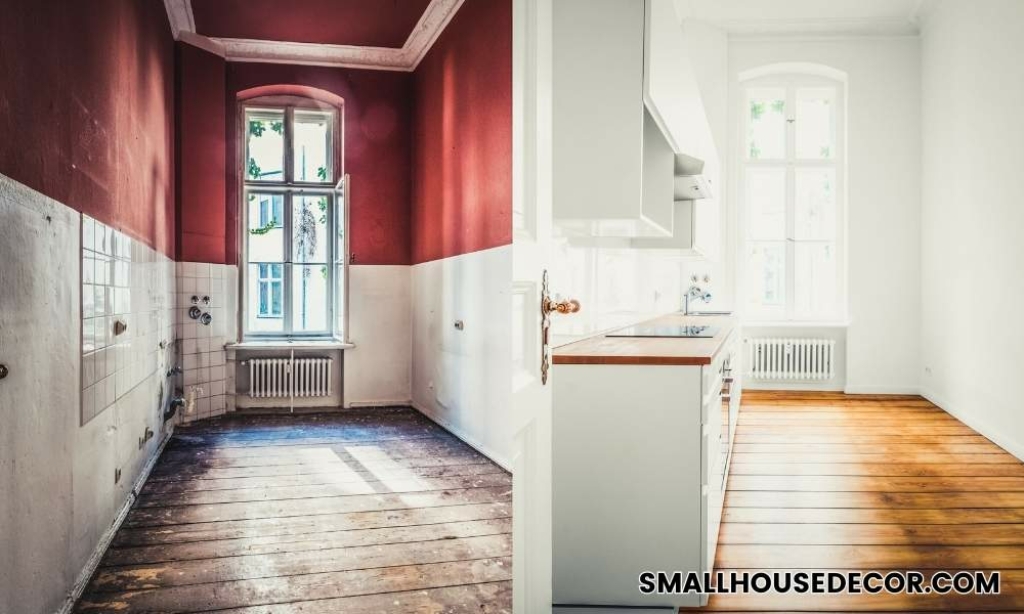When it comes to real estate investing, After Repair Value, or ARV, is an important concept to understand. ARV refers to the estimated market value of a property after improvements or repairs have been made. In essence, ARV tells you the maximum amount you can reasonably expect to receive when selling or renting out a property.
Knowing how to calculate ARV accurately is essential for investors who want to make smart decisions and profit from their investments. For those who want to venture into the real estate industry, understanding ARV is crucial.

Understanding the Concept of ARV
To clearly understand what ARV is, first, you must understand the concept of market value. Market value is the estimated price a property will fetch on the open market, assuming it meets certain conditions, such as being in good condition, in an area with similar properties, and being sold at a fair price.
The after-repair value takes this concept and estimates how much the property could be worth once any repairs or improvements have been completed. This gives investors an idea of what they can expect to sell or rent out a property once all renovations are complete.
Also Read: Roof Repair 101: A Comprehensive Guide to Fixing Roofing Issues
How To Calculate ARV
Calculating After Repair Value accurately requires some research and careful analysis. First, look for comparable properties recently sold in your target area to get an idea of the market prices for similar properties.
Next, carefully consider any potential renovations or repairs needed to bring the property up to market standards. Consider both the cost of materials and labor and any additional expenses such as permits or fees. You can use a repair estimator tool to help with this process.
Now, add the estimated cost of repairs to the market value of comparable properties, and you have your ARV – the maximum amount that your property can be expected to sell or rent out for after renovations are complete.
It is crucial to remember that ARV is an estimate; there is no guarantee that a property will sell for this amount. Market conditions can change, and unexpected repair costs may reduce the final sale price.
In a nutshell, calculating ARV can be like this:
- Property condition
- Property age
- Style and construction
- Overall size
- Location
- Renovations needed
- Comparable property value
- Estimated cost of repairs
The Benefits of Knowing ARV
Knowing a property’s After Repair Value is beneficial to both experienced investors as well as those just starting in real estate investing. Here are some benefits to consider before you purchase or sell your property:
- Allows investors to calculate the return on their investments accurately.
- It helps investors determine a fair price when buying or selling properties.
- It gives an idea of the amount that can be made from renting out a property once repairs are complete.
- Enables investors to identify opportunities in declining markets.
Once you understand After Repair Value and how to calculate it accurately, you can make better decisions when investing in real estate. This will help maximize your profits and minimize any losses.
What Other Factors Affect ARV?
In addition to the factors already discussed, other essential elements can affect ARV. These include:
- The location of the property – If a property is located in an area with high housing costs or where demand for rental properties is high, it can lead to higher ARVs than other areas. This is because potential tenants may be willing to pay more for a property in a desirable location.
- The condition of the property – Another factor that affects ARV is the upkeep and general maintenance of the property. If a potential tenant notices disrepair or damage, they may decide to look for another place instead, and this can lead to lower offers on the rental market. This means that a well-maintained property is likely to have higher ARVs.
- The length of the lease – The length of a lease will also affect ARV. Tenants may be willing to pay more for longer leases because it offers them greater security and stability than short-term agreements.
- The state of the rental market – If there’s an oversupply of properties in a given area, this can lead to lower ARVs as landlords compete for tenants. On the other hand, if demand outpaces supply, it can drive up prices and result in higher ARVs for those who own or manage rental properties.
How ARV Influences Profit Margin In Property Investment
Property investors always look for ways to turn higher profits with little overhead. One way to increase profitability is to factor in the ARV of a property when considering an investment.
The ARV helps you determine the potential profit margins from the property after all repairs and improvements have been completed.
Using the ARV to determine the potential profit margin on a property investment is calculated by taking the ARV and subtracting the total costs of purchase, repairs, and improvements.
This difference will then be your anticipated net profit.
- For example, if an investor purchases a property for $100,000 with estimated repair costs of $30,000 and improvement costs of $20,000, the total investment cost would be $150,000.
- If the ARV of that property is $200,000, then this investor could expect to generate a net profit of $50,000 ($200,000 – $150,000).
Final Words
It’s important to note that there are other factors outside of just costs, such as market trends and rental value which can affect the potential return on property investment. However, having an accurate estimate of the ARV is invaluable when it comes to calculating potential profits and making smart decisions about investments.